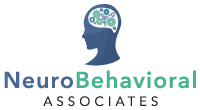Reading is one of the most essential life skills that a child learns in school, but statistics from the National Assessment of Educational Progress have shown that a third of U.S children can’t read at a basic level.1 This is, of course, an alarming statistic. Children who continue to struggle unassisted with reading are less likely to finish high school, and are more likely to end up in poverty, or in prison.2
Still, college programs that teach educators how to instruct students in reading are often not demonstrating the very research-based techniques that help children to become successful readers. Instead, they operate on the assumption that the brain is naturally wired to learn to read — something that, unfortunately, simply isn’t true at all.
Whole Language Vs. Phonics
Those who have researched the science of reading all come away with the same finding — all children are capable of learning to read, if only they’re taught using the techniques that have been scientifically proven to wire the brain to read.1 The problem that is prevalent across the United States is that most classrooms are not actually using the approaches that are supported by brain research.1 Most classrooms use approaches deemed whole language or balanced literacy techniques that are based upon the belief that learning to read is as natural as learning to talk, and that simply being exposed to literature will result in a child “picking up” reading.
The truth is that learning to talk is a natural part of early child development, but learning to read is a skill that human beings have only acquired relatively recently, with the advent of the written word. Our brains haven’t quite caught up with our progress in society, and as a result, we learn to read not through experience with text (although that is important), but through decoding words, and recognizing the connection between letters and their respective sounds.
The whole language method most often seen in classrooms today involves the use of sight words and word walls, wherein children learn to visualize and memorize words. Struggling readers may even be told to “guess” at words they don’t know by using the book’s pictures or context clues, rather than through the process of sounding out words. This does not teach children to read successfully, and instead tends to result in the child finding the act of reading to be challenging and unenjoyable.
To read well and happily, children need step-by-step instruction in phonics, and this is something backed-up by numerous studies.1 This knowledge can also be confirmed by what we know about reading disorders. Students with dyslexia, for instance, struggle to decode words. They struggle with the relationship between letters and their sounds. To read successfully, a child must learn how to properly decode words. While some children will grasp this skill more quickly than others, every child is ultimately learning to read in the same way — through understanding phonics, not by simple literature exposure and word memorization.
Of course, this doesn’t mean that children shouldn’t be exposed to quality literature. Child development science shows us that phonics should be at the core of reading instruction, but parents should still be reading to their kids from an early age, and surrounding their children with books, all of which has also been associated with better reading and intellectual outcomes.3
Why Are Colleges Resistant to the Basic Science of Reading Instruction?
With all of this science pointing to the importance of phonics over whole language techniques, why are teacher preparation programs ignoring the evidence? In fact, research conducted by The National Council on Teacher Quality found that less than 4 in 10 teacher preparation programs nationwide instructed future educators in the methods that are actually supported by brain-based reading research.1 Additional research into the teaching methods of colleges even found that future educators were sometimes even asked to write about their own philosophy on how to teach reading, as though no research for teaching this skill exists.1
Sadly, researchers have found that many places of higher education aren’t just unaware of the science of how children learn to read. Many are aware of this science, and actively reject it all the same. Why? Many feel that it goes against their own personal philosophies, which teachers are — as the essays mentioned above demonstrates — often taught are important to reading instruction.1
The truth is that reading instruction is not actually a philosophy. It is a science supported by large volumes of research that effectively demonstrates how children learn to read.2 To improve our children’s reading abilities, we absolutely must be teaching them systematic phonics instruction, as well as reading to them as young children, and making books a regular part of their home lives. It isn’t a war between whole language and phonics — it’s actually a seamless combination of everything with phonics at the core of child development.
Teaching Phonics for Reading Success
To become successful readers, children must recognize the relationship between sounds and letters. Luckily, with the prevalence of technology, helping your child understand this relationship is easier than ever. Online games such as ABC Mouse and singing programs such as Jolly Phonics are effective ways to use your child’s love of the computer or tablet to learn these basic reading skills. Technology aside, there are also print books based around phonics, often incorporating popular characters, such as the Peppa Pig and Paw Patrol Phonics Box Sets readily available online or at your local bookstore.
Other steps you can take to improve your child’s reading skills include reading to your child (with expression!), encouraging your child to read aloud and sound out unfamiliar words, and filling your home with literature. Take your child on trips to the library and talk about your own favorite stories. Your love of literature will surely be contagious.
If you’ve ensured that your child is learning proper phonics instruction, but your child still seems to be struggling with understanding letter-sound relationships and decoding words, Neurobehavioral Associates can help determine if your child has a reading disorder, such as dyslexia. We can provide a comprehensive assessment to understand your child’s needs, as well as proper referrals to get your child on the track to reading success.
References:
- Hanford, E. (2018, October 26). Why Are We Still Teaching Reading the Wrong Way? Retrieved December 10, 2018, from https://www.nytimes.com/2018/10/26/opinion/sunday/phonics-teaching-reading-wrong-way.html
- Reports, A. (n.d.). Why aren’t kids being taught to read? Retrieved December 10, 2018, from https://www.apmreports.org/story/2018/09/10/hard-words-why-american-kids-arent-being-taught-to-read
- Zhou, N. (2018, October 12). Novel news: World’s biggest bookworms revealed in study. Retrieved December 10, 2018, from https://www.theguardian.com/books/2018/oct/12/the-more-books-in-a-house-the-brighter-your-childs-future-study-finds






